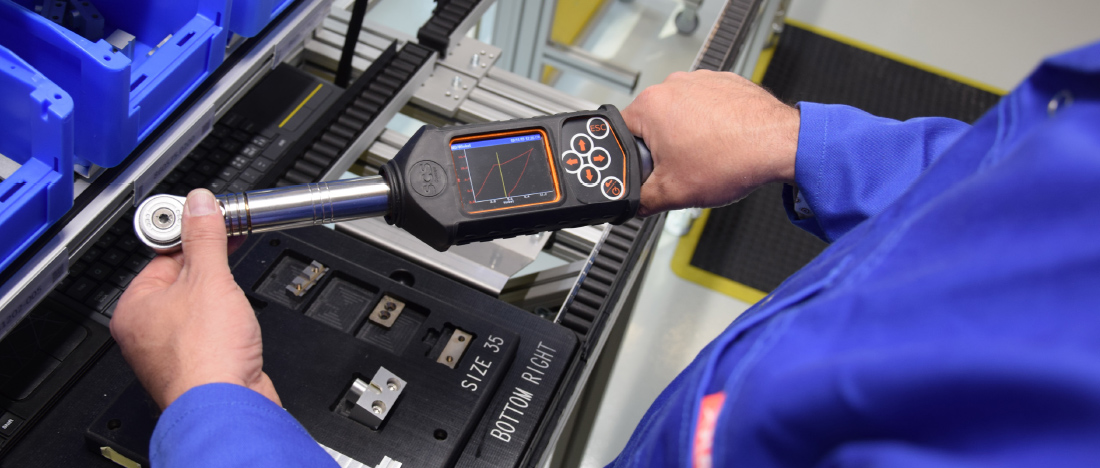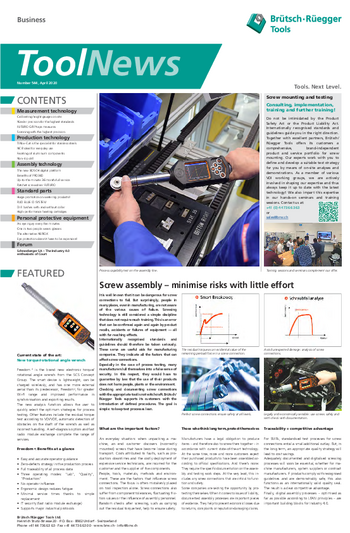Nr. 544 - Screw assembly – minimise risks with little effort
It is well known that it can be dangerous for screw connections to fail. But surprisingly, people in many places, even in manufacturing, are not aware of the various causes of failure.
Screwing technology is still considered a simple discipline that does not require much training. This is an error that can be confirmed again and again by product recalls, accidents or failures of equipment — all with far-reaching effects. Internationally recognised standards and guidelines should therefore be taken seriously. These serve are useful aids for manufacturing companies. They indicate all the factors that can affect screw connections.
Especially in the case of process testing, many manufacturers lull themselves into a false sense of security. In this respect, they would have to guarantee by law that the use of their products does not harm people, plants or the environment. Checking and documenting screw connections with the appropriate tool is not witchcraft. Brütsch/Rüegger Tools supports its customers with the introduction of defined procedures. The goal is simple: to keep test processes lean.
What are the important factors?
An everyday situation: when unpacking a machine, an end customer discovers (incorrectly mounted) screws that have become loose during transport. Costs attributed to faults, such as production downtimes and the costly deployment of expensive service technicians, are incurred for the customer and the supplier of the components. People, tools, materials, methods and environment. These are the factors that influence screw connections. The focus is often mistakenly placed on tool inspection alone. Screw connections also suffer from component tolerances, fluctuating friction values or the influence of assembly personnel. Random checks after screwing, such as carrying out the residual torque test, help to ensure safety.
Those who think long term, protect themselves
Manufacturers have a legal obligation to produce items – and therefore also to screw them together – in accordance with current state-of-the-art technology. At the same time, more and more customers expect their purchased products to have been assembled according to official specifications. And there's more: They require the specific documentation on the assembly and testing work steps. At the very least, this includes any screw connections that are critical to function and safety. Some companies are seizing the opportunity by protecting themselves. When it comes to issues of liability, documented assembly processes are important pieces of evidence. They help to prevent economic losses due to returns, complaints or reputation-damaging claims.
Traceability = competitive advantage
For SMEs, standardised test processes for screw connections entail a small additional outlay. But, in the long term, an appropriate quality strategy will lead to cost savings. Adequately documented and digitalised screwing processes will soon be essential, whether for machine manufacturers, system suppliers or contract manufacturers. If products comply with recognised guidelines and are demonstrably safe, this also functions as an internationally valid quality seal. The result is a clear competitive advantage. Finally, digital assembly processes – optimised as far as possible according to LEAN principles – are important building blocks for Industry 4.0.



